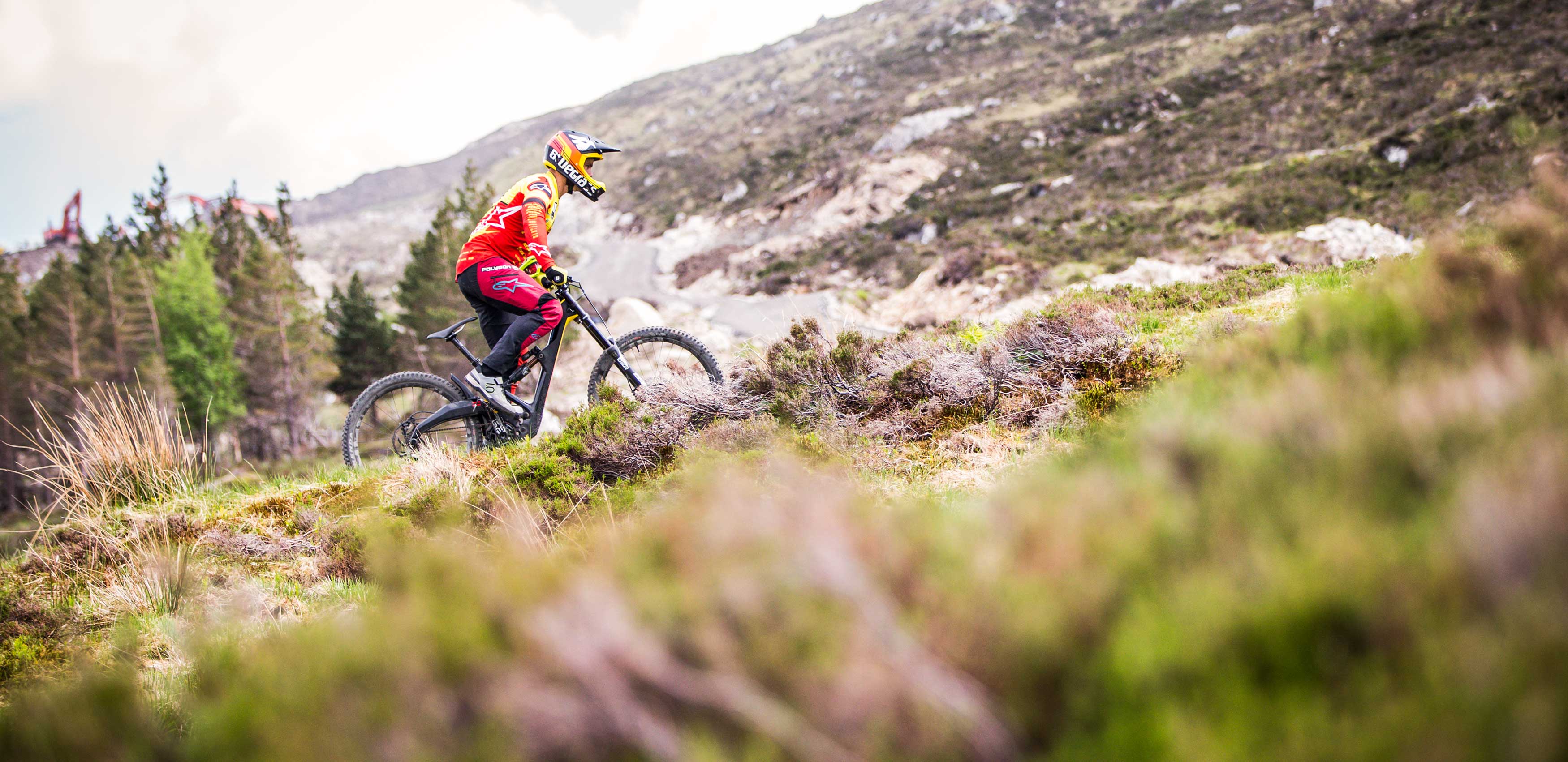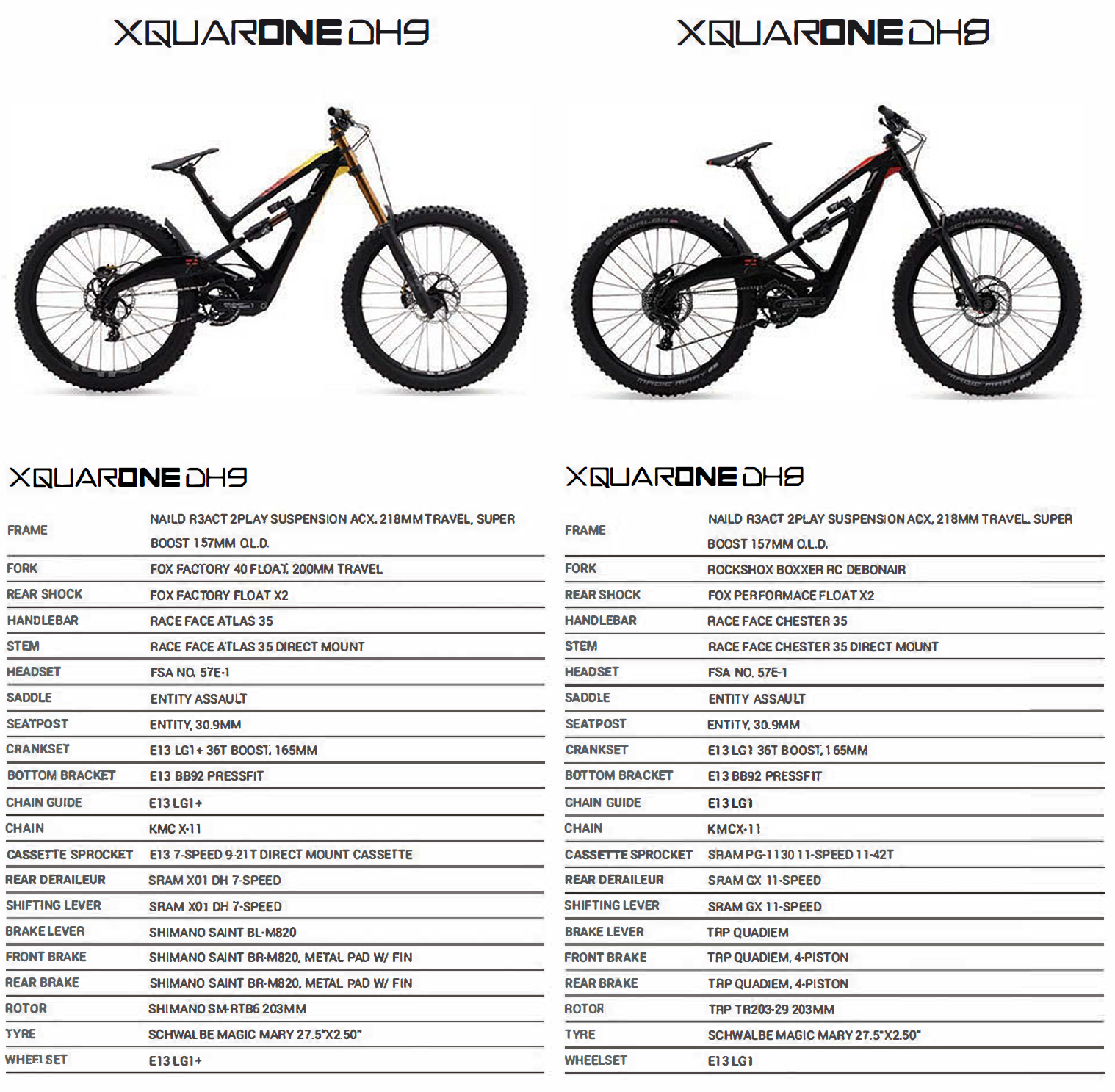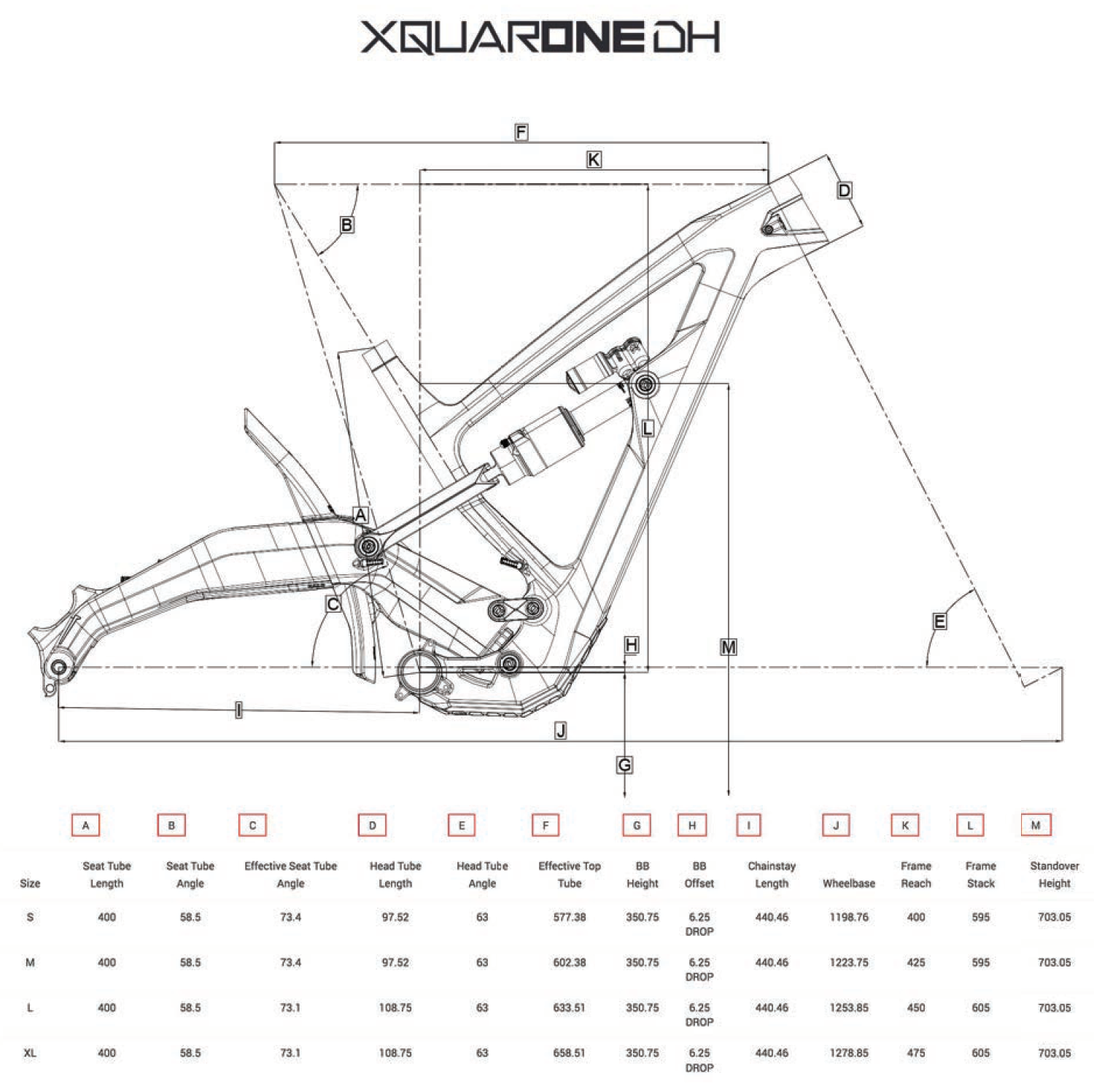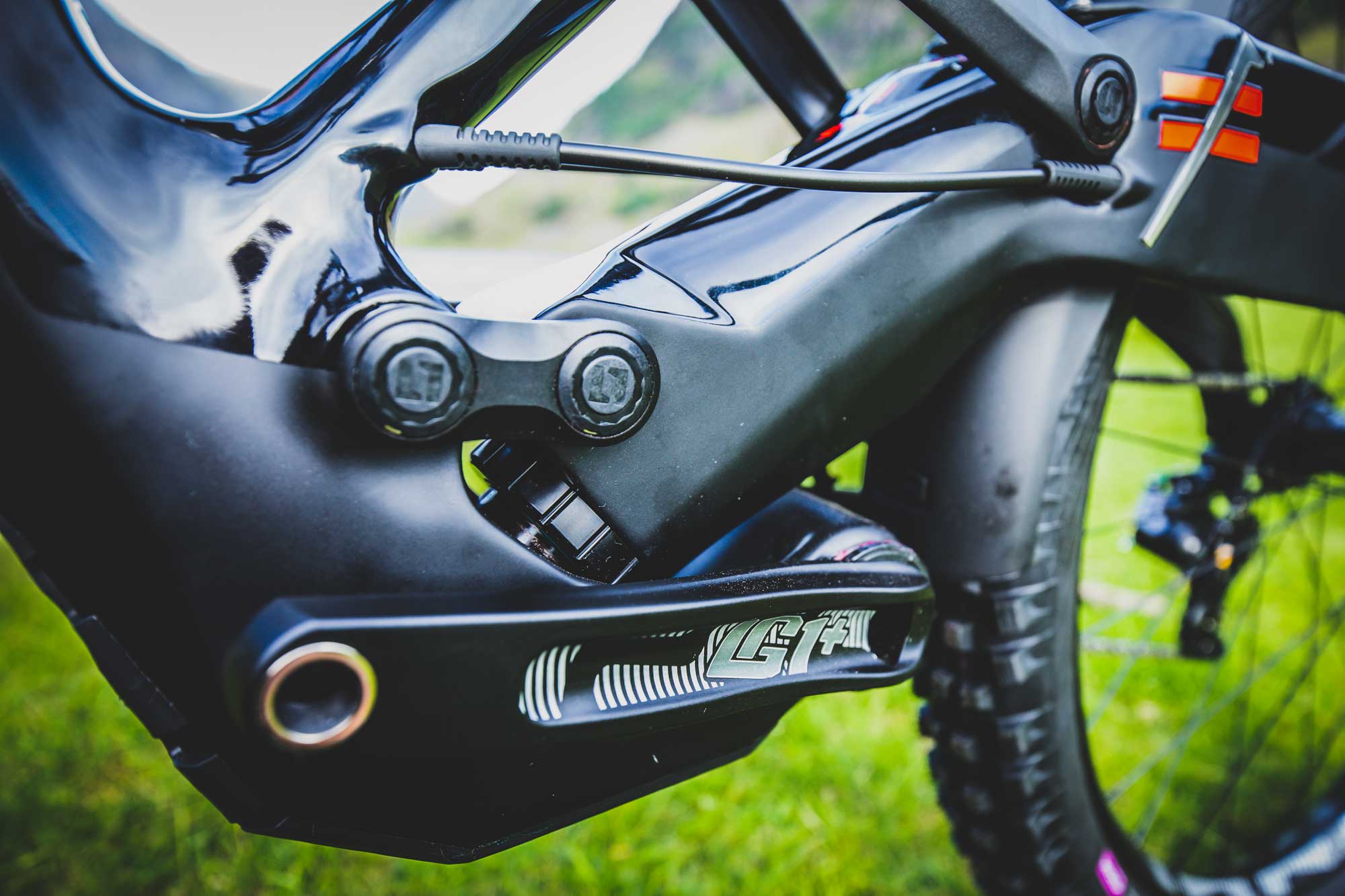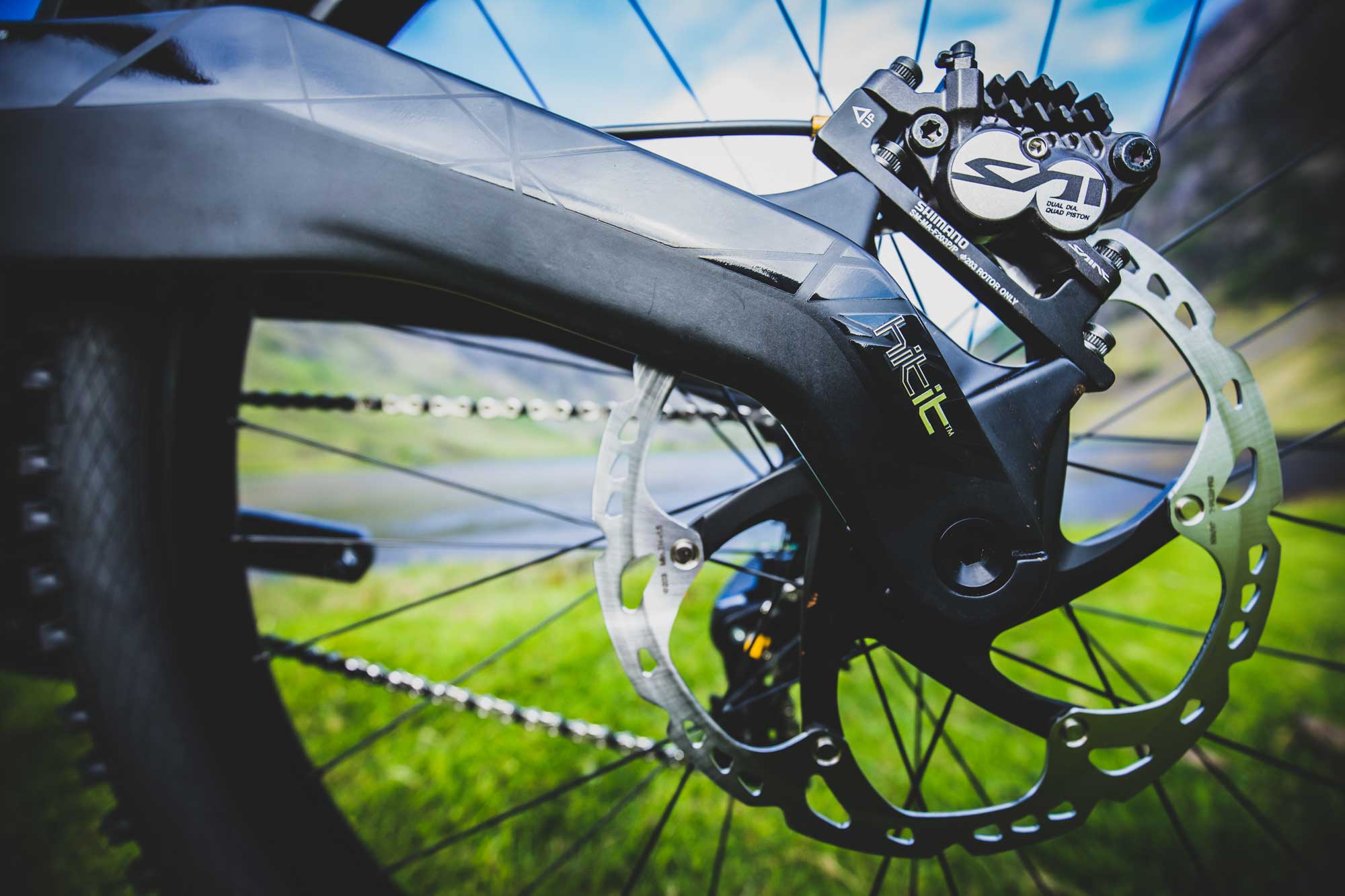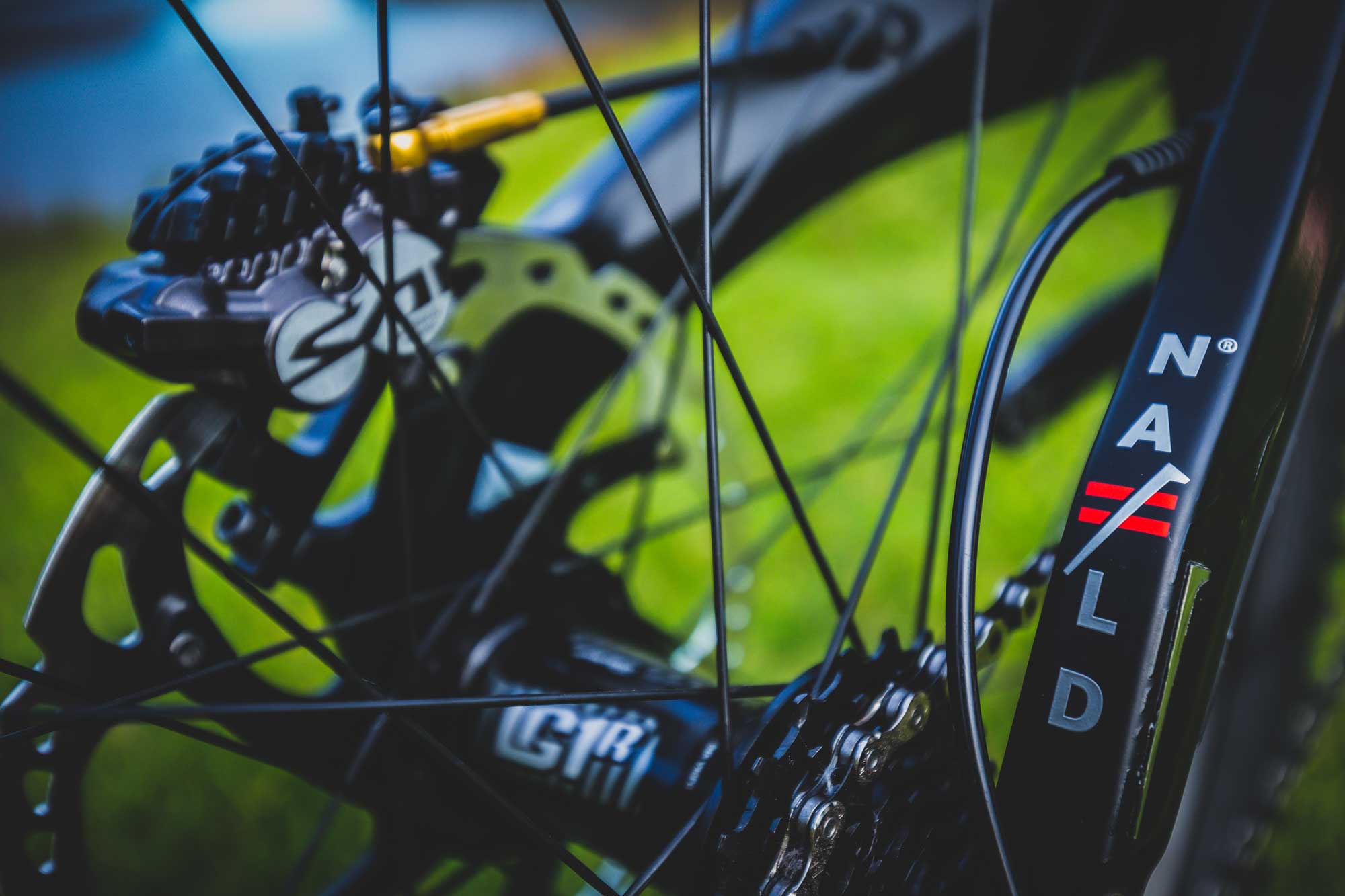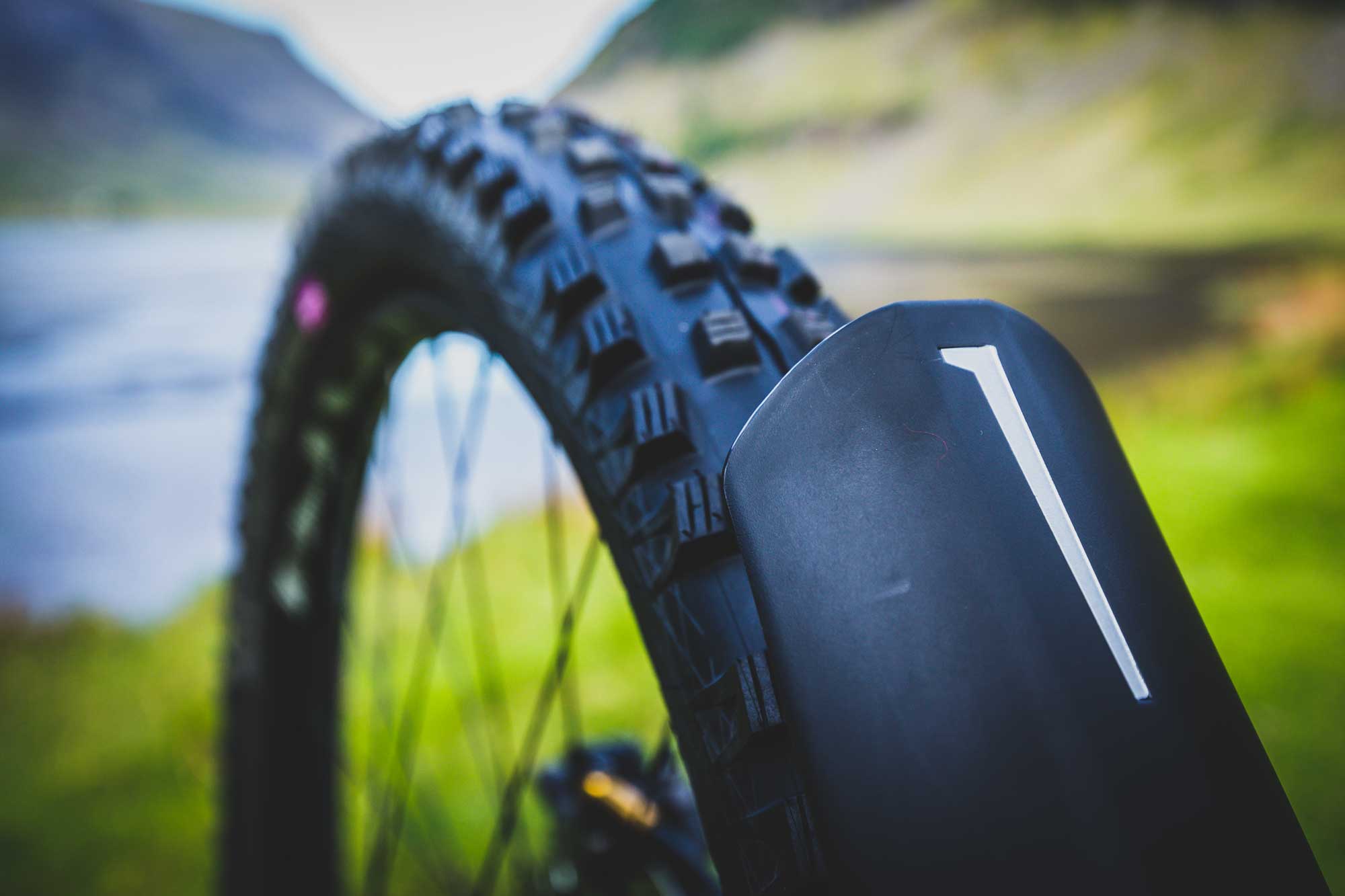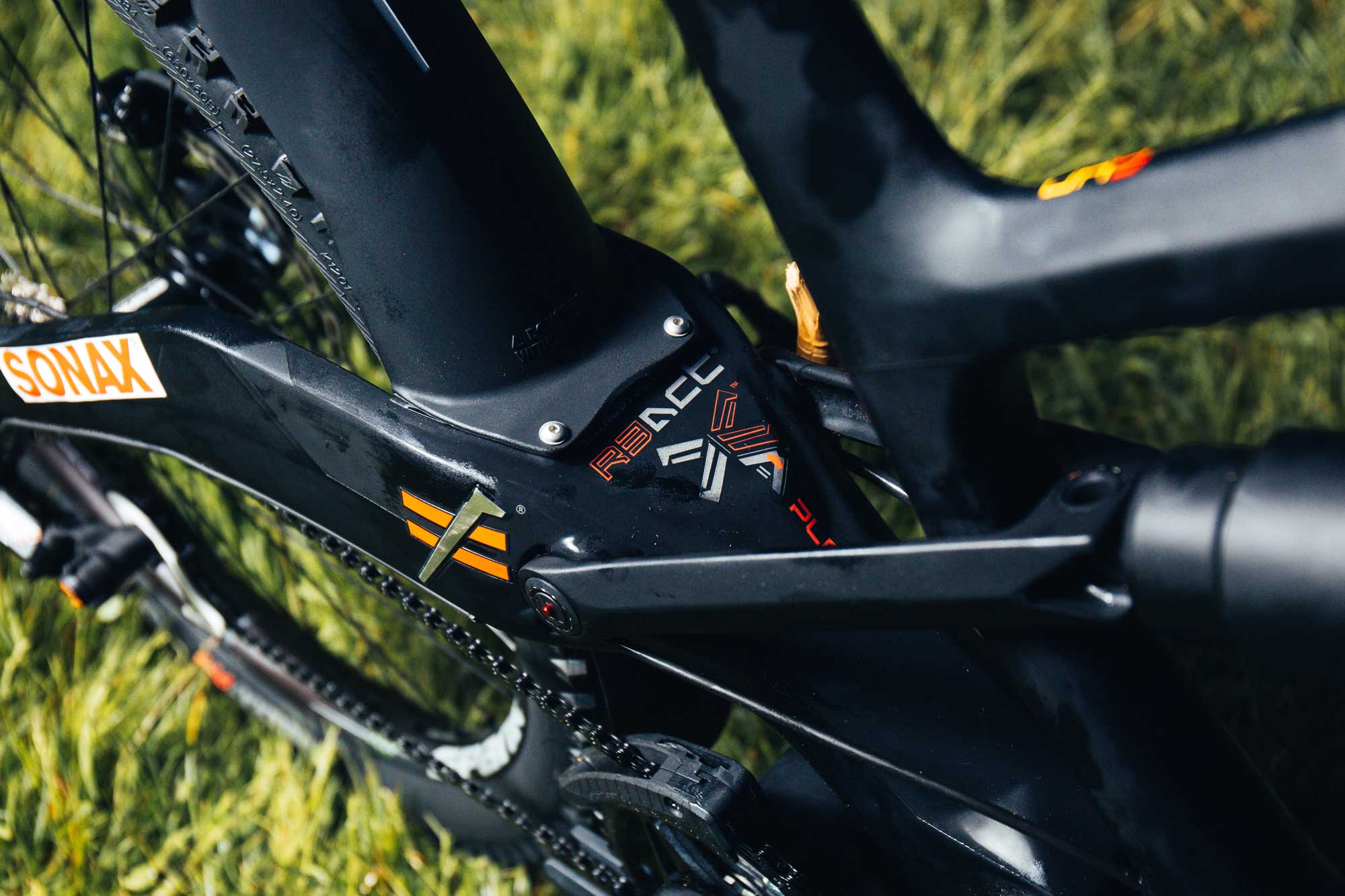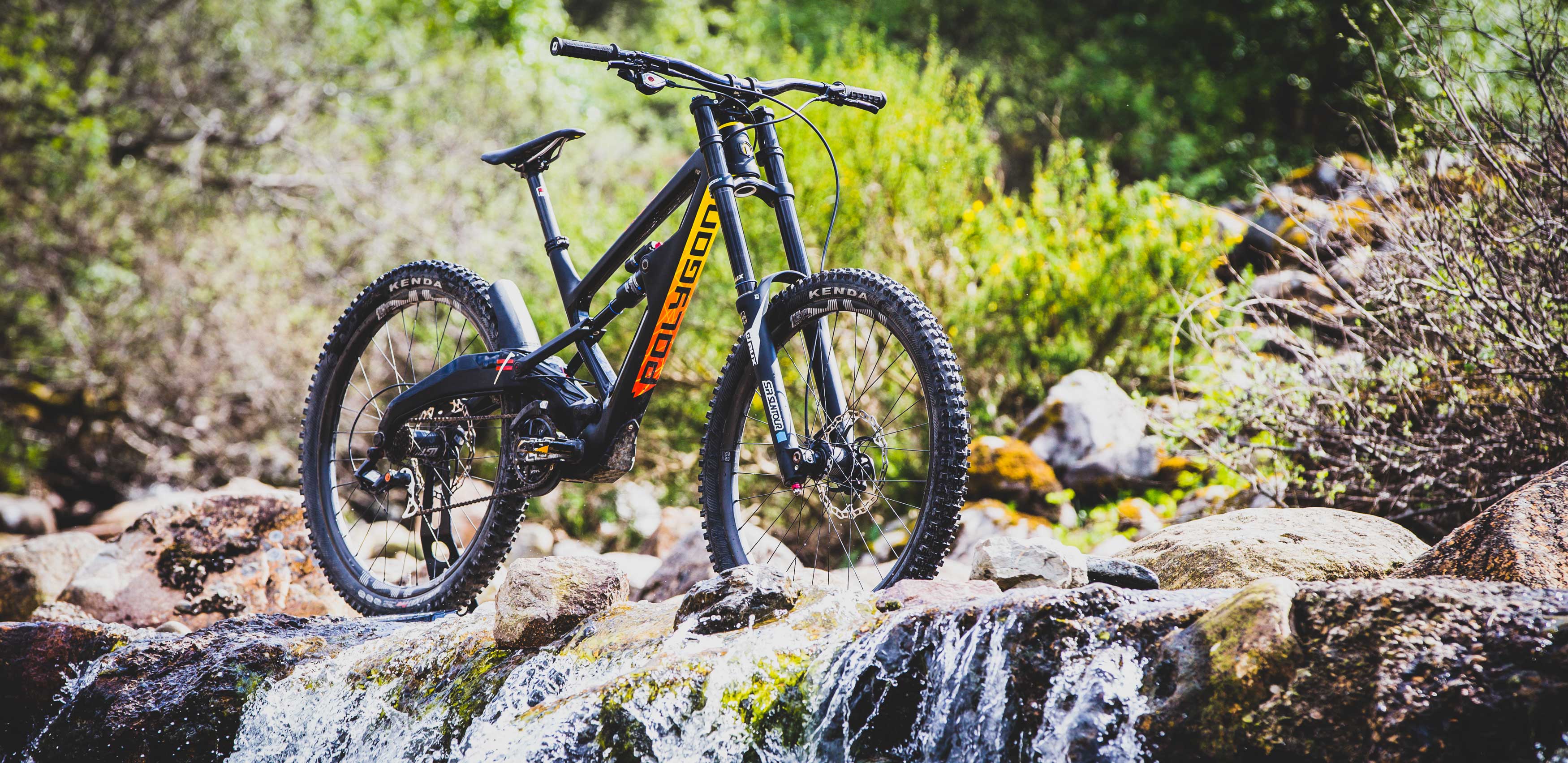
First Ride
Polygon XQUAREONE DH
Words by Robert Johnston | Photos David Mcfarlane
In 2017, the NAILD R3ACT platform was revealed to the public aboard Polygon’s Xquare One EX9. The bike and design were met with seemingly equal amounts of fanfare and confusion. While the keyboard warriors worried about how the design looked, reviewers praised the suspension design for its efficiency and performance. The NAILD R3ACT system is truly something different, but as we reviewed the Xquare One EX9 we could only wonder when we would see the design on a DH bike. Our answer is here.
A collaborative effort was made between Polygon bikes, NAILD (the suspension system designers) and World Cup downhiller Mick Hannah to develop a downhill bike centered on the R3ACT linkage design. The ultimate goal was to create a bike that would give Mick the greatest chance of sitting on the top step of the World Cup podiums, but the bike would still need to be suitable for the full spectrum of riding abilities so that it would reach production.
The Lab
According to Polygon, “When we started designing the new XQUARONE DH bike, we wanted to make a bike that is fun to ride.” That goal influenced their choice to use 27.5 wheels instead of the more race-oriented 29-inch wheel.
The unique frame is fully carbon fiber and weighs 8.8 pounds (with shock). The top of the line complete weighs less than 32 pounds. Thanks to Polygon’s close relationship with NAILD, they’ve been able to work together closely to integrate several key features into the new XQUARONE DH.
To keep the back end short and stiff, Polygon designed the bike around 440mm chainstays with Super Boost 157mm rear wheel spacing. To further increase rear end stiffness, 34mm Torque Caps are used to keep the rear wheel tracking straight and true.
Polygon took the feedback from the EX9 trail bike, where concerns of excessive flex resulting in shock binding were highlighted, and beefed up the necessary bits. It is good to see Polygon has made a very conscious effort to reduce the possibilities for unwanted torsional flex. The large hardware, stout linkages and torque caps on the rear wheel all contribute to a very stiff sounding system on paper. I was excited to see how it would do on the trails.
The XQUARONE DH utilizes 225x75mm Metric shocks with a Trunnion mount. Like Polygon’s XQUARONE EX line of bikes, the DH models utilize the NAILD R3ACT 2 Play system. While the platform is the same, the DH frame uses a different tune to better handle the rigors of downhill riding.
“The Fox Factory X2 shocks are custom-tuned with incredibly light damping circuits to give us the famous R3ACT ride our fans have grown to love. By reducing the damping restrictions in the shock and allowing the suspension design’s kinematics to handle the heavy lifting,” says Polygon.
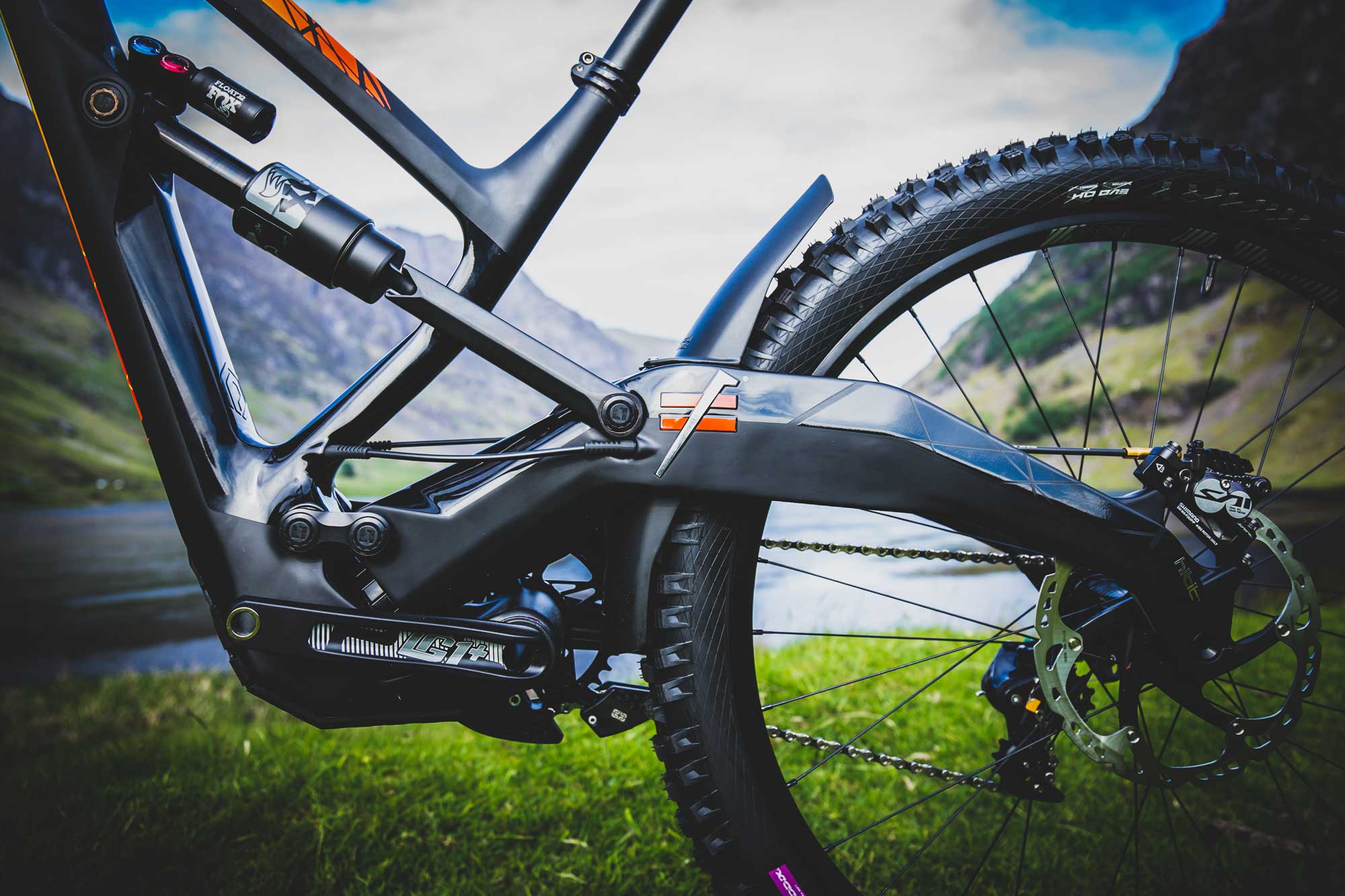
Geometry figures are conservative by 2018 standards, with numbers comparable to a 2015 YT Tues. That said, the evolution of downhill bike geometry has not been as dramatic as the trail and enduro segments. Similar geometry is still used by many brands.
After learning so much about the bike and it’s design, it was time to hit the dirt to see what the bike could really do.
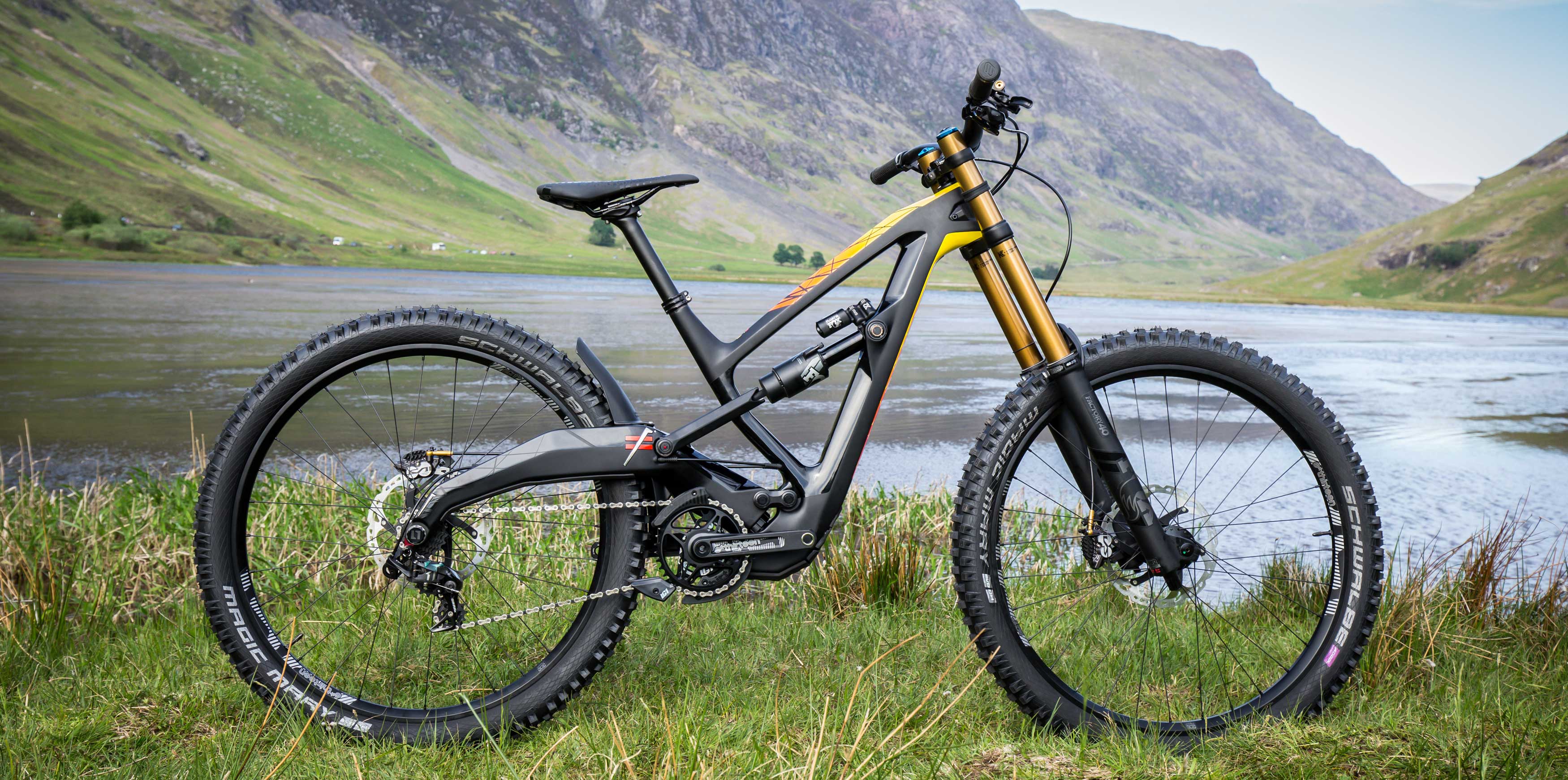
The Bike
We’d be spending the day on the Glencoe Black downhill track, a steep, rocky track with a good mix of rough boulder fields and some faster, more bike park-style turns and jumps. After serving as the 2018 British Champs downhill track, it was the ideal testing ground to assess the capabilities of this burly machine.
I arrived at the camp and was presented with my XQUARONE DH – the top tier build. Being fully experienced and confident with the spec on the bike, I was able to focus entirely on the performance of the frame and suspension package.
I’d never seen a R3ACT bike in person before. It is quite unique. The thick mono-stay at the rear, appears beefy and ready to tackle anything. The overall look of the bike is low-slung and sleek, looking fast even when standing still.
Analyzing the details on the frame, the internal cable routing is quite neat, although the plastic ports have a tendency to pop out much like they did on the EX9. There is ample tire clearance for the massive 2.5” Magic Mary tires on wide E.13 rims, which should avoid any clogging issues in all but the thickest mud. There are two neat integrated mudguards around the rear tire, which blend nicely with the lines of the frame to prevent the infiltration of rocks and mud into the complicated suspension assembly above the BB. The frame pivot bearings are well sized and sit in the linkages rather than being pressed into the carbon, giving a wider, stiffer stance. The design also makes replacement easier. The upper shock mount has cartridge bearings surrounding the hardware to remove any bushing-stiction and allows for smooth shock actuation. The integrated rubber guard spans a good length of the protruding downtube, but doesn’t wrap around the edges of the carbon, making those edges susceptible to contact with any debris that is flicked up off the front tire, or possibly direct contact with rocks on the trail on particularly awkward sections where the bashguard of the chain guide would typically contact.
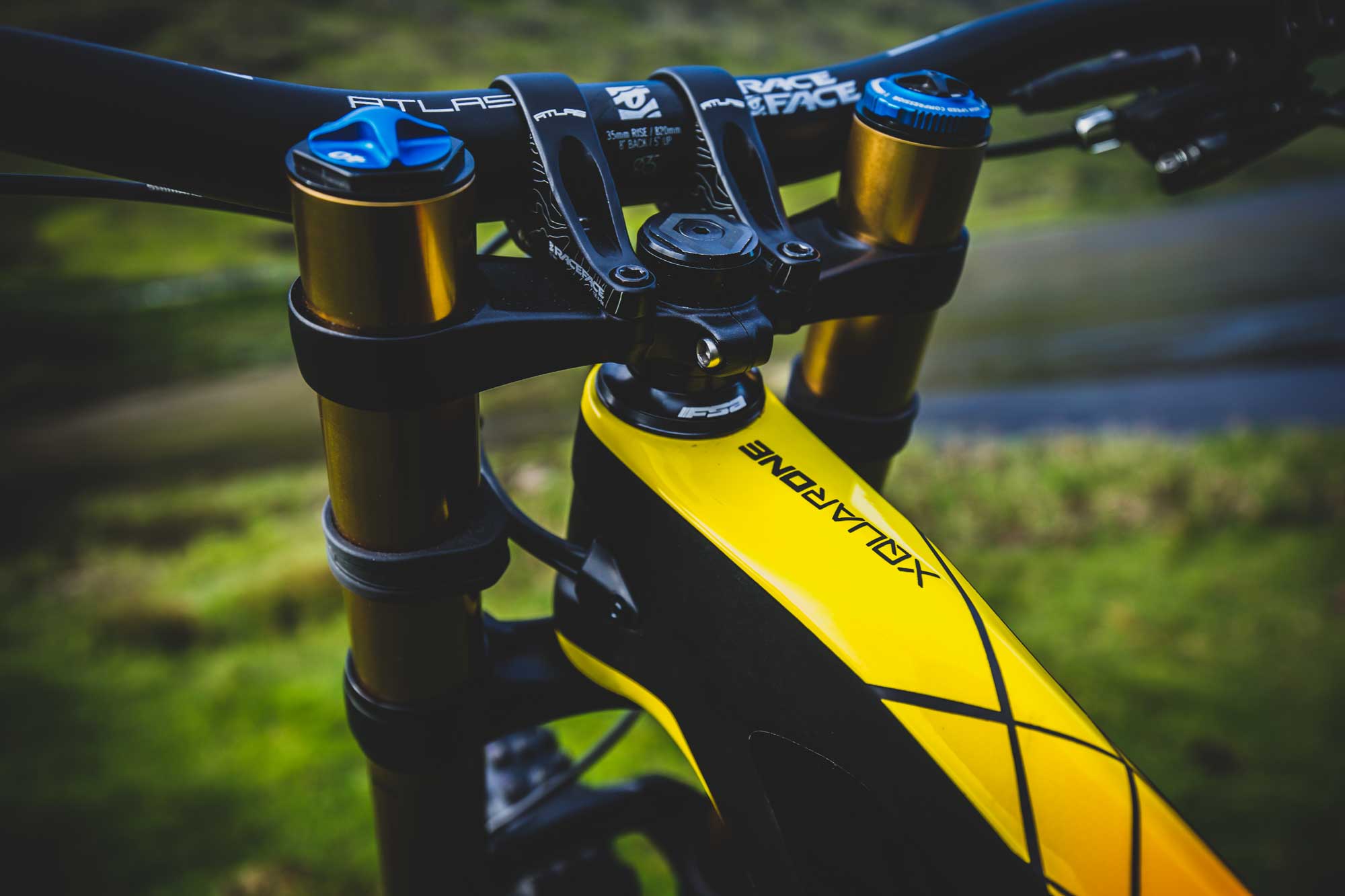
There was only a single XL frame at the camp, and since I was not the tallest rider there, I was forced to ride the size Large with a 450mm reach. After owning a Large YT Tues CF not long ago with very similar geometry, the bike wasn’t too much of an issue, though a quick sit on the XL did feel more comfortable to me at 6’2” (188cm). As previously mentioned, the geometry figures are certainly on the conservative side as the trend continues to push towards longer reach numbers, and taller riders may find even the XL to be a little on the short side. Nevertheless I was able to ride the bike, feel confident in all terrain.
I set the sag on the bike under the advice of the Polygon engineer who was present at the camp. My go-to sag for a downhill bike would typically be in the region of 30%, but I was encouraged to run less sag on the XQUARONE to unlock its full potential. The Fox Float X2’s maximum pressure of 300psi resulted in somewhere in the region of 25% sag for me at roughly 220lbs, fully kitted. This could certainly present issues for heavier riders. I was advised to leave the rebound and compression damping at zero clicks. Riding this set up in the car park didn’t fill me with confidence, with a very pogo-stick like sensation. But I left my preconceptions behind and made myself open to form opinions on the track.
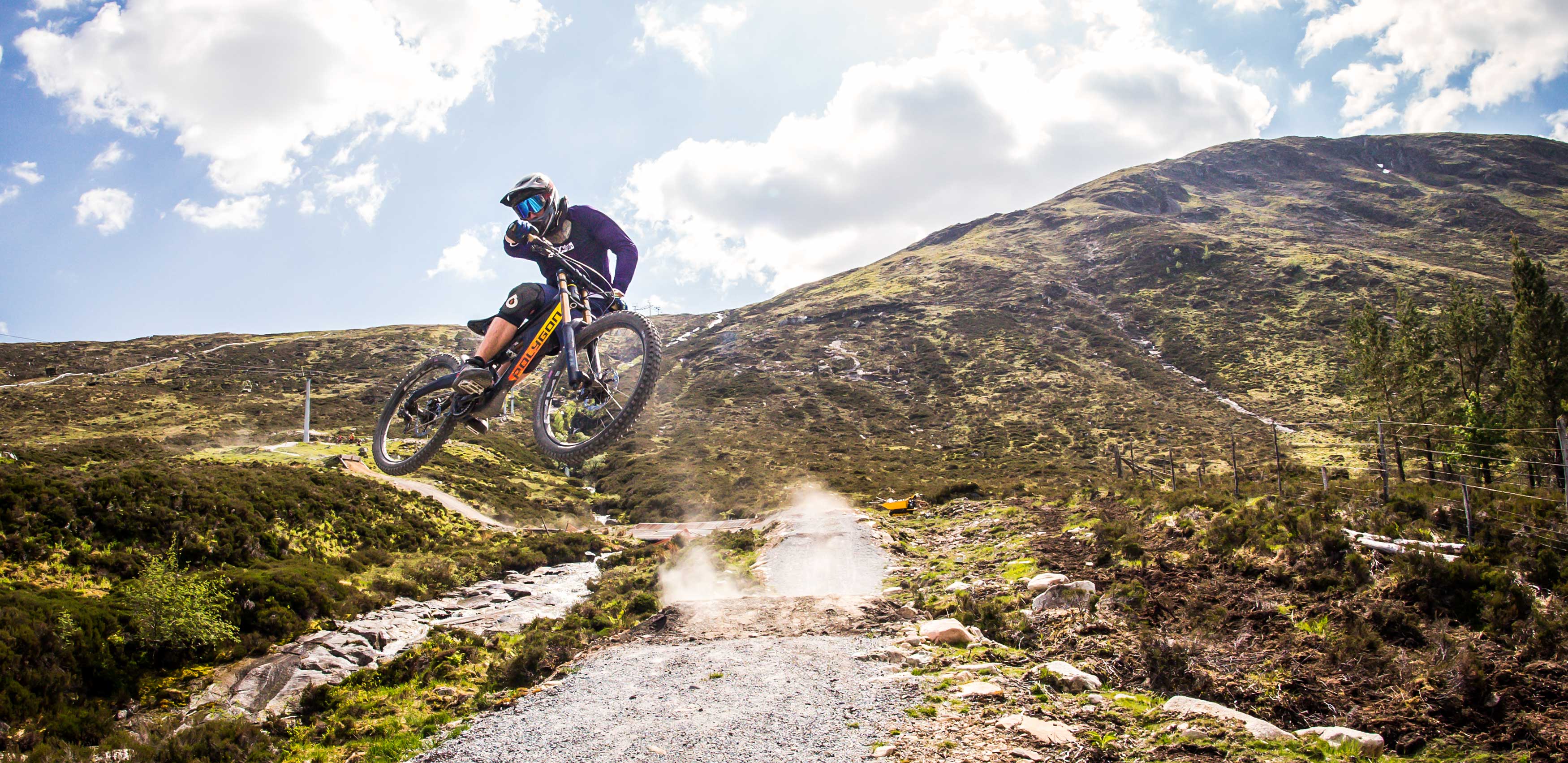
The Ride
I loaded the bike on to the Glencoe chairlift, eager to get to the top of the hill and get the tires on the dirt. Mashing the pedals into the first section of the track, it was clear that I was riding a downhill bike. It didn’t accelerate away like a cross country hardtail– the heavy tires/wheels with grippy rubber made sure of that. What was apparent, however, was the distinct lack of bob for a bike with 218mm travel. On the advice of Darrell Voss, NAILD owner and vastly experienced engineer, I attempted to pedal through flat rock gardens, expecting an unmanageable amount of pedal feedback. However, to my surprise, the bike remained incredibly composed, and the suspension continued to absorb the rough terrain whilst I was putting down the power. This is a phenomenon I have not experience before, unlocking serious potential to gain seconds in a race run by pedaling where others cannot.
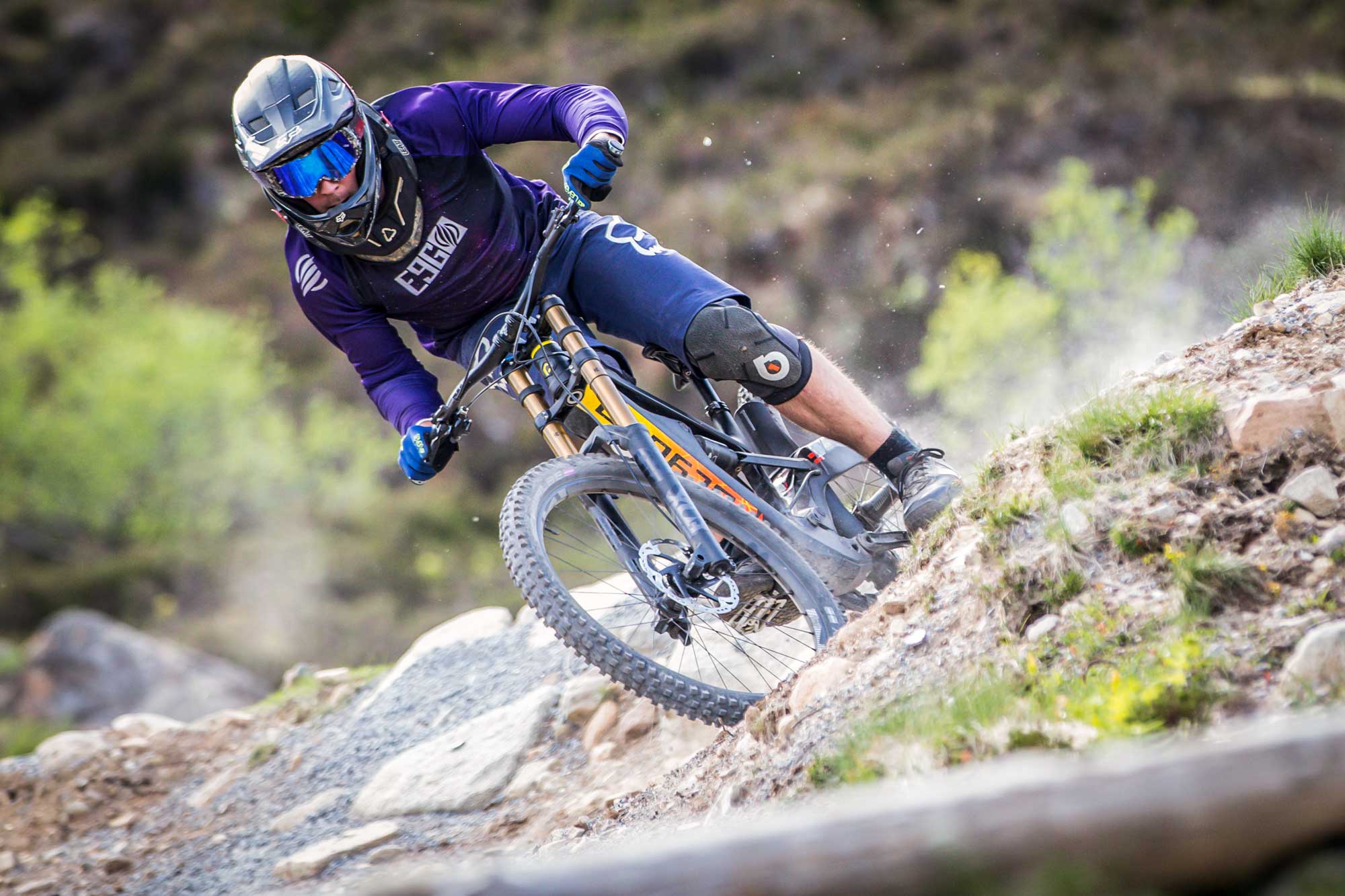
With the pedaling characteristics giving me quite the surprise, it was time to get into the steeper, rough terrain. Coming over some initial drops, it felt composed. Noticeably absent was the weird bucking sensation that I was concerned about in the parking lot. It used the travel well, absorbing the impact without any bottoming out or excessive feedback. Opening up into a long straight littered with big boulders and drops into the rough, the bike really came into its own. The rear wheel has an incredible ability to get out of the way with successive impacts over the rough terrain. It was completely glued to the ground, maintaining speed unlike any other bike I’ve ridden. In the 13 or so runs following over the course of the two days, this rough-terrain ability continued to impress. After becoming used to its ability to maintain speed, I was finding more and more time by pumping through rock gardens where I would usually expect to be getting thrown about. The more confident I felt, the harder I pushed the suspension through the rough terrain, and the more comfortable it felt.
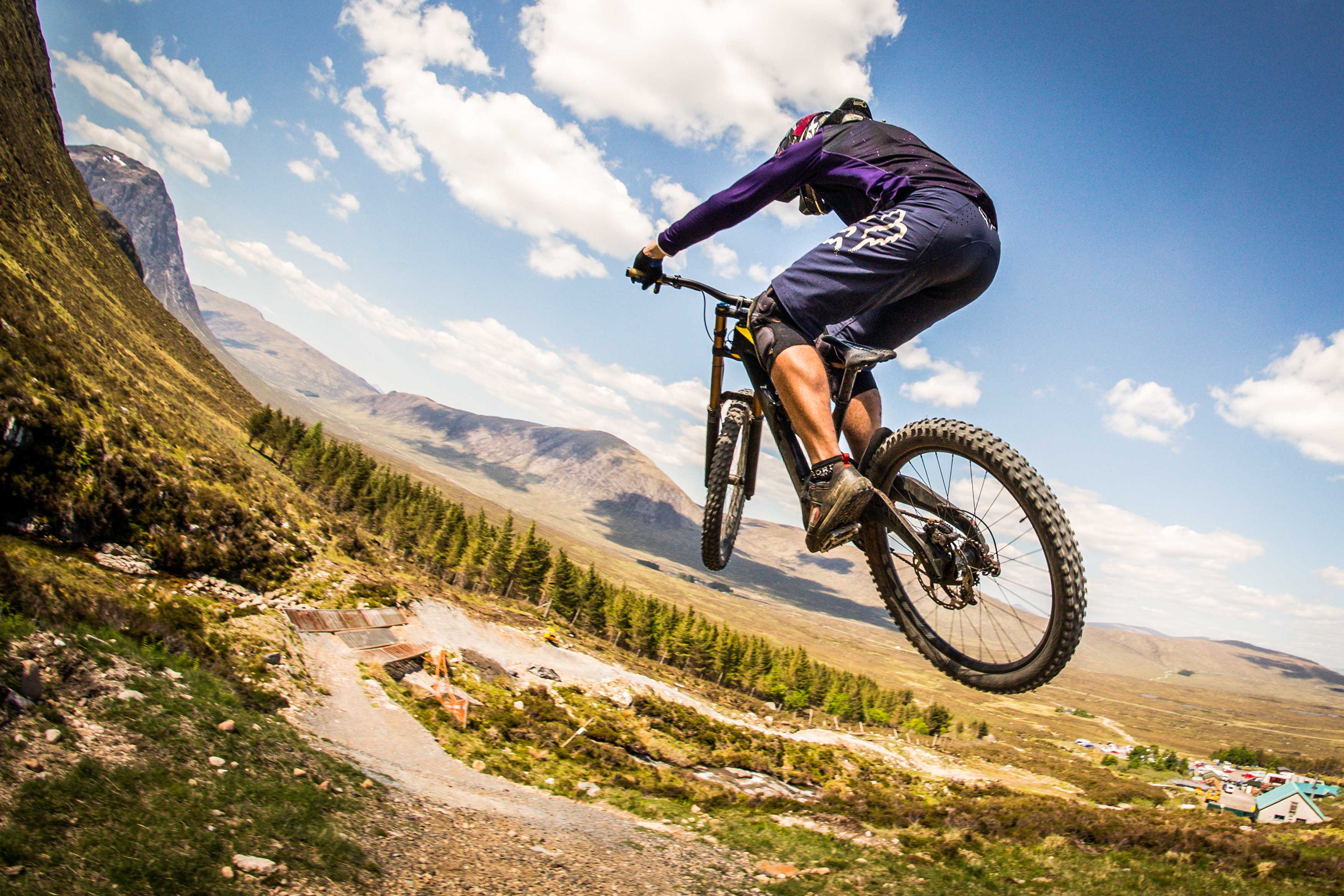
The bottom of the Glencoe Black features a few high-speed berms and jumps, giving the opportunity to assess the capabilities of the bike in a more bike park style setting. The initial runs over the jumps highlighted the inherent lack of ‘pop’ in the suspension, with the bike much preferring to stay low. Unlocking proper airtime required a very active approach, loading the bike hard into the take-offs and giving it a good pull-up off the lip. Whilst the car-park feeling may suggest the bike would give you almost too much pop, this was certainly not the case. The bike encouraged a flat-out approach through the jumps, suiting a racing environment more than a freeride approach.
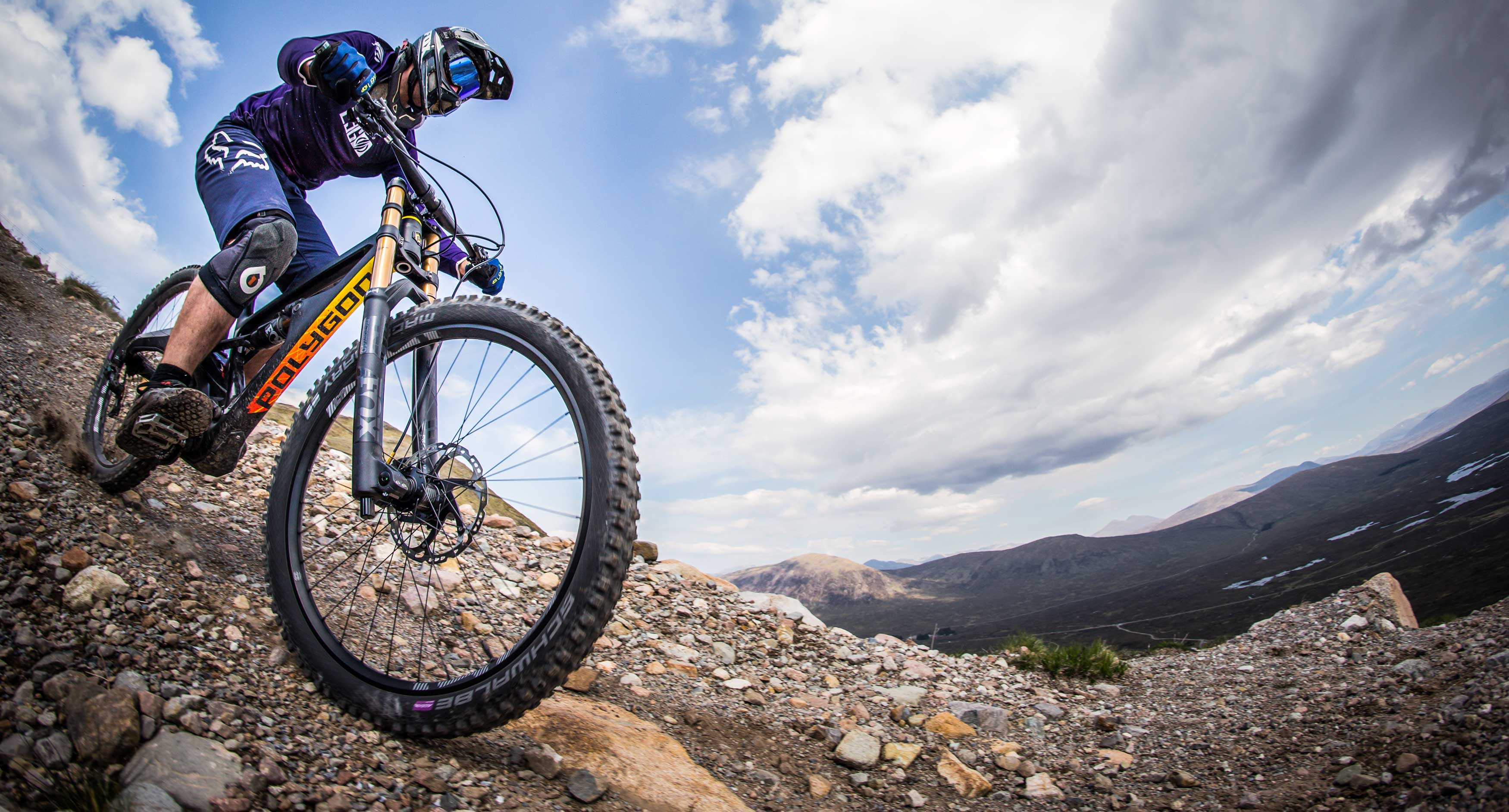
Through the flat-out open berms, the grip on hand was impressive, letting me forget about the brakes and carve hard. I pushed the bike as hard as possible through some tighter turns to assess the torsional stiffness of the chassis, and was pleasantly surprised by the lack of flex in the rear end. It seems Polygon has taken the feedback from the XQUARONE enduro bikes very seriously, working hard to ensure the downhill bike doesn’t share the same stiffness concerns. Whilst there was no excessive flex, the bike still tracked a straight line through the rough stuff. I think Polygon nailed the stiffness balance perfectly with this one.
Fatigue is a big issue for racers. Every unit of energy saved over the course of the track will allow for a harder final sprint or more sustained pedalling throughout a race run. The efficiency of pedaling of the XQUARONE combined with its bump-eating ability certainly have potential to reduce fatigue levels over the course of a race weekend, which may result in a small competitive advantage for racers on the platform. With times so tight at the top level, any advantage is significant, and I think Polygon have something special here with the XQUARONE.
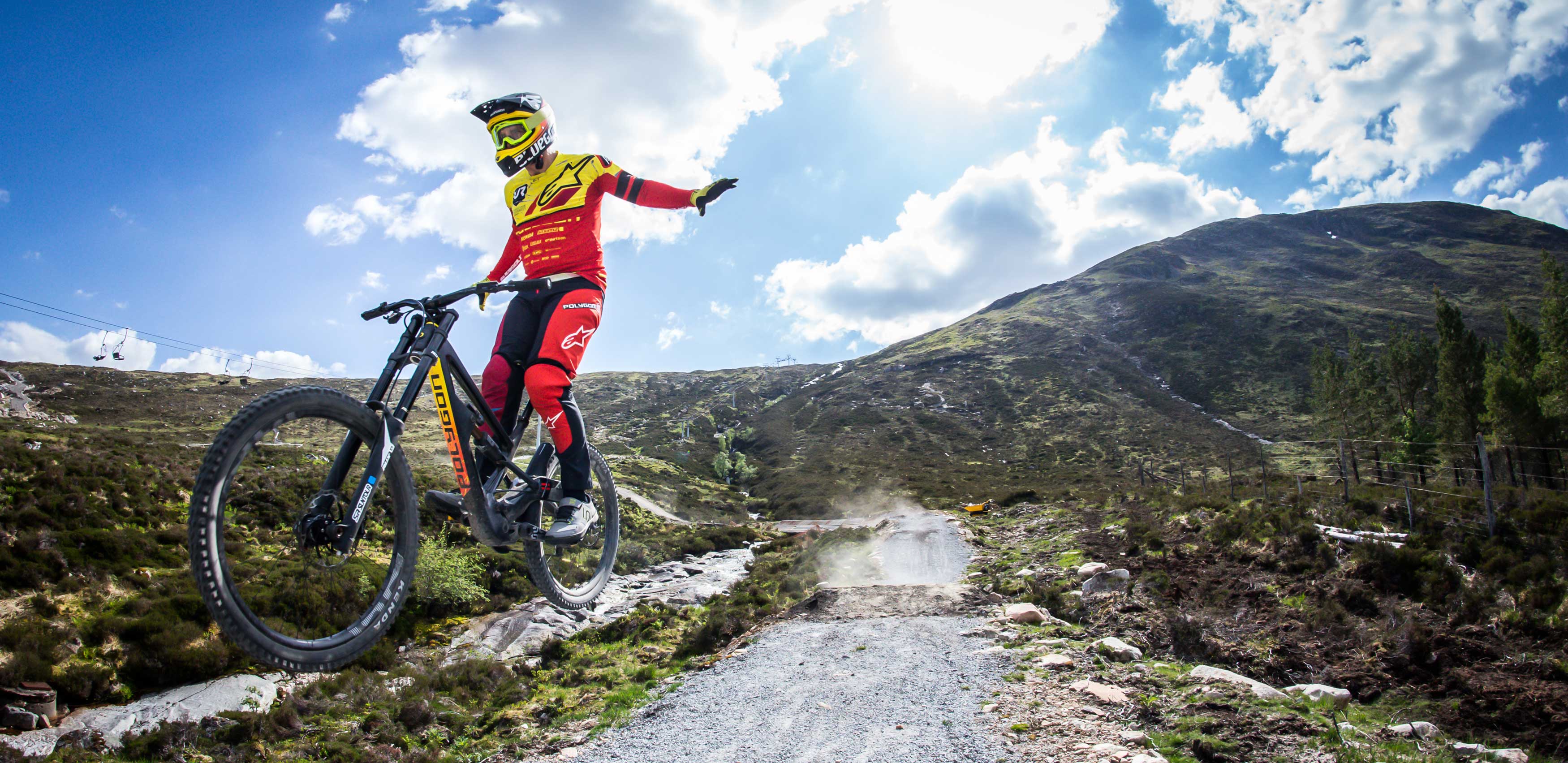
MICK’S INPUT
The camp provided a unique opportunity to ride with Mick Hannah, to talk to him in a casual environment about his views of the bike and his involvement with its development. As a rider who has been at the top of the game for 20 years, beginning in BMX racing as a junior and progressing to a highly competitive downhiller at the highest level, ‘Sik Mik’ has a depth of knowledge and experience that most of us can only dream about when it comes to riding and racing bikes.
When asked about the influence of the new platform on Mick’s improved form at the end of the 2017 season, he said the following:
“The new bike (XQUARONE) is so much fun to ride. It makes it easier to train. With more comfort and less fatigue it provides more useful training time. There is great traction on offer, and it never snaps back when it does break loose.” He likened the predictability of the bike to locking the diff on a car– it won’t do anything surprising and will always come back if you know how to operate it properly. Back-to-back testing against the clock at Cairns highlighted a consistent 1-second improvement switching from the old bike (Colossus) to the XQUARONE. That’s certainly an impressive improvement on Mick’s home track. As a man who relies on the clock to make decisions regarding bike set up, the consistent improvement riding the new bike solidified his opinion that the new platform provided a competitive advantage over the predecessor.
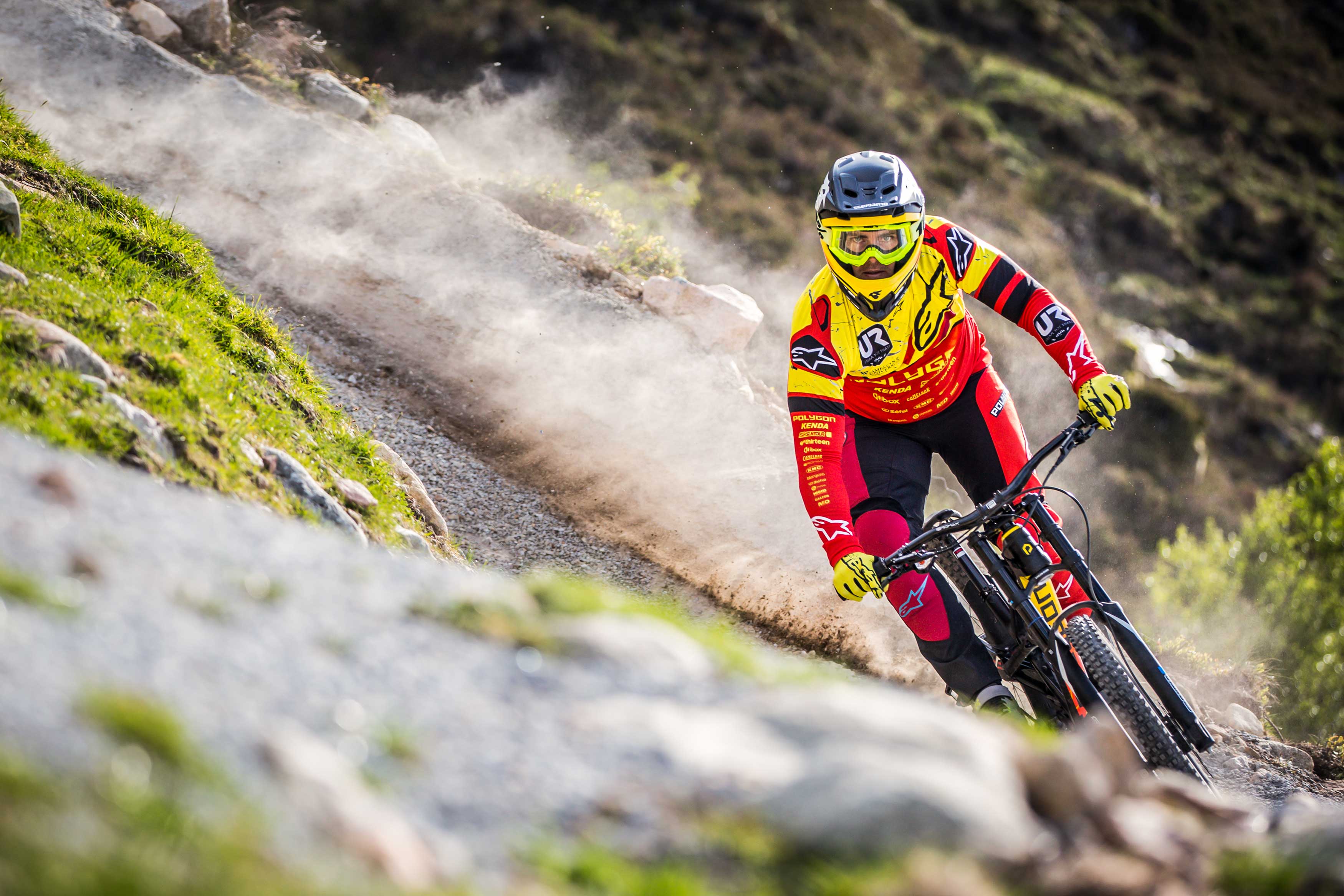
As a man who is generally very specific about his setup, it was surprising to find that this was the first bike he didn’t know the weight of. For him the handling was good enough that the weight of the bike wasn’t a concern. He finished by suggesting that he would be “surprised if anyone had a better bike.” Of course, as a sponsored athlete, there’s a general expectation for you to support your sponsors and praise their equipment, but this came across as genuine. After my two days aboard the bike I have no reason to disagree.
To learn more, visit Polygonbikes.com
